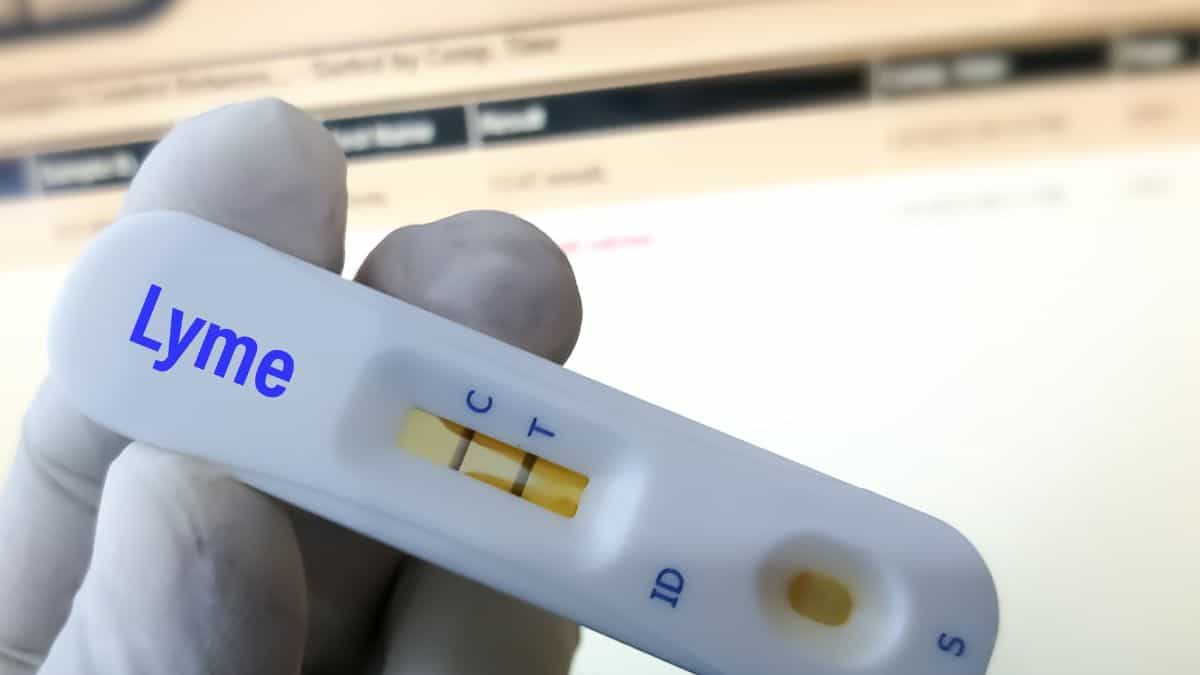Growing up as an active kid and later adult in New York state, ticks have been a part of my entire life. I never gave them much thought despite the warnings posted on every trailhead before a hike in the woods. I’ve found countless of these buggers crawling on me, picked off plenty embedded in my skin and dismissed it all since I was a healthy person with a good immune system.
Two years ago, mysterious neurological symptoms began popping up and as they started compounding every month for half a year, slowly taking over my body to an unrecognizable state, I could no longer ignore or dismiss them due to stress. A six month long quest for answers began, involving almost every medical test and procedure imaginable.
The end result after thinking it could be everything under the sun from a neurological autoimmune issue to something much worse such as ALS (amyotrophic lateral sclerosis), turned out to be Lyme disease and I’ve spent the last 16 months trying to overcome it. Here’s what everyone should know.
*The content of this article is not intended as medical advice. It is based solely on my personal experience.

You Can’t Always See Ticks

Ticks are tiny enough as is, but it turns out that nymph ticks, which is what the baby version of these little things are called, are even smaller. So small in fact, that they can look like a freckle or a speck of dirt on your body. So, when people say they’ve never seen a tick on them before, chances are they’ve had plenty and just didn’t realize it.
A Bulls Eye Rash Is Actually Pretty Uncommon

When people think of Lyme disease, they immediately think of the bulls eye rash (known formally as erythema migrans). While the CDC states that as many as 70% of people will display the rash, a 2010 study by John’s Hopkins indicated that only 43% of people in the state of Maine exhibited it. If you spot the rash on your body, consider yourself lucky to have such an outward sign of the disease in order to procure treatment.
Testing Is Woefully Inaccurate

This is by far the most frustrating thing about Lyme disease. The CDC recommends a two-step test. If the first test (called the ELISA) is negative, you do not progress on to the second test. If the first test is positive or equivocal, the second test is run to confirm. The problem, however, with these tests is the inaccuracy rates. Conventional testing for Lyme can lead to 60-70% false negatives due to the way the bacteria “hides” in your body.
The Normal Treatment Doesn’t Work For Everyone

The typical treatment for Lyme involves a two to four week course of antibiotics. If you’re lucky enough to find a tick, see a rash and get treatment immediately, you may be one of the lucky ones this approach actually works for. However, so many never know until weird symptoms start popping up and by this time, the standard treatment is likely to have little effect on the chronic state of the disease.
It’s Called The “Great Mimicker” For Good Reason

Lyme is known as the great mimicker due to the overlap its symptoms have with a variety of other diseases. So many Lyme patients have been misdiagnosed with other issues only come to find out months or years later that it was Lyme disease the entire time. A common list of Lyme symptoms can include:
- Fatigue
- Migratory muscle and joint pain
- Headaches
- Neck pain
- Memory challenges
- Sleep issues
- Depression, anxiety, or mood swings
- Brain fog
- Cognitive decline and Alzheimer’s
- Neuropathy (numbness and tingling)
- Immune dysfunction
- Cardiovascular symptoms
These symptoms can morph over time and vary depending on if the disease is in the acute stage or the chronic stage. Personally, my symptoms included numbness and tingling in my feet and legs, muscle twitching all over my body, heart palpitations, air hunger, internal vibrations, muscle weakness and shaking, dizziness, vertigo and more.
You Can Have It For Years Without Symptoms

When tests outside the conventional labs finally pinpointed Lyme as the probable underlying cause for me, it made me realize I had most likely had this for years. Plenty of people live with Lyme without issue until a “triggering event” occurs and causes their immune system to weaken allowing for the bacteria to take over. I’m pretty confident this is what happened to me. A combination of stressful events preceded the onset of my symptoms giving weight to this theory.
Don’t Settle For Non-Answers

Whenever I speak to someone who thinks Lyme may be at the root of their problems but isn’t getting anywhere with testing and doctors, my biggest piece of advice is to not settle. Don’t settle for dismissive doctors, don’t settle for people telling you it’s in your head and be your own advocate. It’s hard and frustrating when your body feels like it’s failing you and no one can tell you why, but had I listened to any of the doctors I’d seen, I’d be on anti-anxiety medicine and in no better shape than I was 16 months ago.
Treatments Outside Of Conventional Medicine Are What Helped Me

When I realized I wasn’t getting anywhere within the paradigm of western medicine, I sought out a doctor trained in Lyme who uses both conventional and alternative approaches. While I think everyone is different and some people can and will get better with antibiotics alone, I also think there are plenty of others who need a different approach. The important thing is do your research and make sure you’re on board with the treatment plan proposed by the professional you’re working with.
Use The Internet To Help You But Know When To Bounce

The internet can be a wonderful source of information when you’re trying to research or find comfort among strangers dealing with the same thing as you. There are plenty of forums where people share their experiences and offer help to others. These resources were actually crucial for me finally figuring out what was going on. However, they can also suck you in to a cycle of doom and gloom. The rabbit hole of despair can be real if you spend hours of every day reading horror stories about people who have been sick for years. Get what you need from these resources and get out!
Mindset Can Be Your Greatest Ally Or Your Worst Enemy

This is something I used to laugh off but when it comes to chronic disease, it’s not as easy as taking a pill and feeling better in a week or two. Healing takes time and without your mind in the right place, you’ll make the process even longer. The brain-body connection is real and just as integral a part of getting better as all the medicines and supplements.
Healing Takes Time

It’s been 16 months and counting for me. I feel light-years better than I did in December of 2022 when I started treatment but I’m still not 100%. My muscles still twitch here and there, my strength is not completely recovered, but so many symptoms have abated. Lyme disease is a journey in healing that will teach you patience. If you’re struggling, know that there is light at the end of the tunnel.
11 Widely Believed Food Myths Disproven By Science

Navigating the world of nutritional advice can feel like tiptoeing through a minefield of misinformation. This article clears the air, debunking popular food myths that science has proven false. We’re slicing through the old wives’ tales and marketing spin that have clouded culinary truths for years.
See Them Here: 11 Widely Believed Food Myths Disproven By Science
Here’s What I Did To Lose 15 Pounds And Finally See My Abs

A few years ago, after being a CrossFit junkie for 4 years at the time, I decided on a goal: I wanted to finally see my abs and look how I felt I should’ve for the amount of time I spent in the gym. As a mid-30s woman who already ate well and considered myself healthy, it was an interesting journey to see what it took to actually achieve this goal. Here were the things that made the most difference. Spoiler alert: there’s no magic pill.
Keep Reading: Here’s What I Did To Lose 15 Pounds And Finally See My Abs
11 Simple Snacks for Better Blood Sugar Control

Keeping your blood sugar in check doesn’t mean you have to skimp on snacking. In fact, the right snacks can be your secret weapon in maintaining those levels while still satisfying those mid-day cravings. Pairing up the good stuff—fiber, proteins, and healthy fats—can help to keep blood sugar steady. These snack ideas are as delicious as they are smart for your health.
See Them Here: 11 Simple Snacks for Better Blood Sugar Control
Select images provided by Depositphotos.
Gina Matsoukas is an AP syndicated writer. She is the founder, photographer and recipe developer of Running to the Kitchen — a food website focused on providing healthy, wholesome recipes using fresh and seasonal ingredients. Her work has been featured in numerous media outlets both digital and print, including MSN, Huffington post, Buzzfeed, Women’s Health and Food Network.








